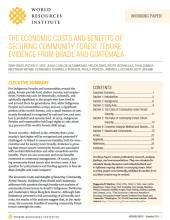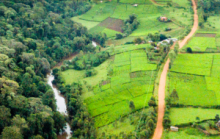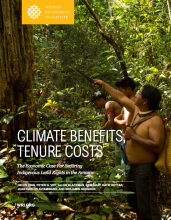/ library resources
Showing items 1 through 9 of 11.Evidence is growing that tenure-secure community forests are associated with avoided deforestation and other ecosystem-service benefits. There are also economic and social benefits connected to communal management.
Global demand for timber, agricultural commodities, and extractives is a significant driver of deforestation worldwide.
Across the world, companies with a wide range of business models are making money from planting trees. These restoration enterprises are proving that restoring degraded forests and agricultural lands is not only good for the planet, but a good business opportunity as well.
Almost one-quarter of the world’s land area has been degraded over the past 50 years because of soil erosion, salinization, peatland and wetland drainage, and forest degradation.
The Restoration Diagnostic is a structured method for determining the status of enabling conditions within a landscape being considered for restoration and for designing the requisite policies, practices, and measures needed for successful restoration.
Degraded lands—lands that have lost some degree of their natural productivity through human activity—account for over 20 percent of forest and agricultural lands in Latin America and the Caribbean.
A new report offers evidence that the modest investments needed to secure land rights for indigenous communities will generate billions in returns—economically, socially and environmentally—for local communities and the world’s changing climate.
With deforestation and other land uses accounting for 11 percent of annual global greenhouse gas emissions, the international community agrees on the need to address deforestation as an important component of climate change.
Pagination
Land Library Search
Through our robust search engine, you can search for any item of the over 73,000 highly curated resources in the Land Library.
If you would like to find an overview of what is possible, feel free to peruse the Search Guide.









